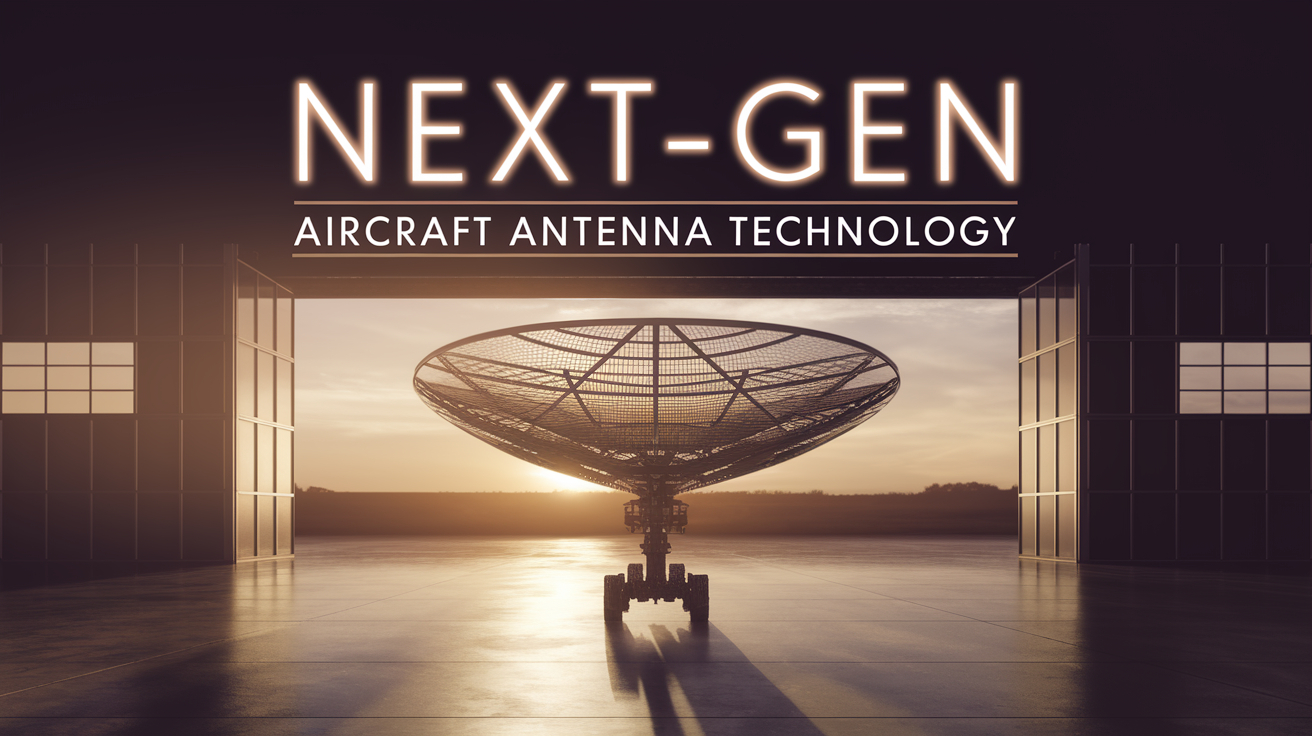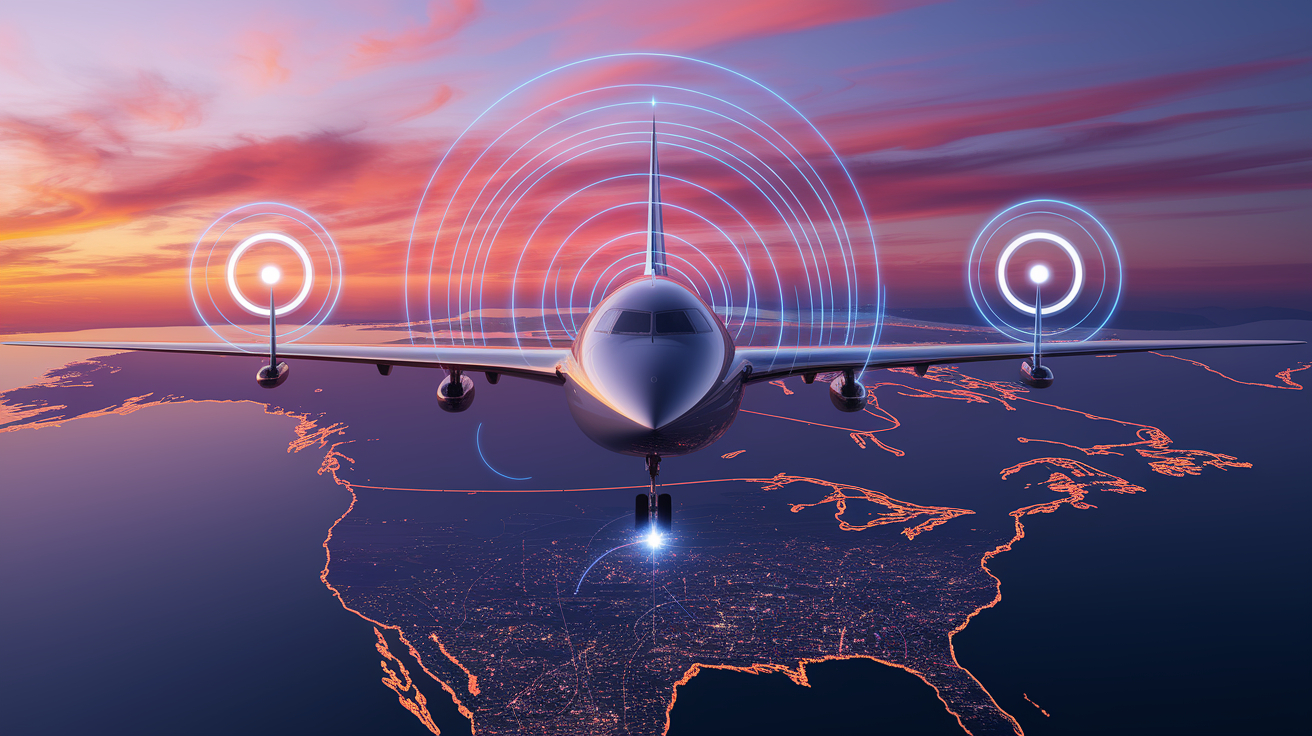
Aircraft Antenna Market Trends & Future in North America
The Aircraft Antenna Market in North America is undergoing significant transformation as advancements in connectivity, SATCOM, and autonomous flight drive demand for more sophisticated antenna solutions. With the increasing reliance on high-speed data transmission, real-time communication, and secure navigation, aircraft antennas have become essential components of modern aviation. The rapid expansion of commercial aviation, the growing demand for military-grade antennas, and the shift towards next-generation aircraft technologies are reshaping the Aircraft Antenna Market in North America.
The Growing Importance of Aircraft Antennas in North America
Aircraft antennas play a critical role in ensuring seamless communication, navigation, and surveillance in both commercial and military aviation. With the aviation industry moving toward enhanced connectivity, the demand for high-performance antennas is growing. North America remains a key player in this sector, driven by the presence of leading manufacturers, research institutions, and advanced defense programs. Aircraft antennas facilitate real-time air traffic management, weather monitoring, inflight entertainment, and secure military communications, making them indispensable to modern aviation operations.
As airlines aim to improve passenger experience through high-speed inflight connectivity, satellite-based communication systems are becoming a standard feature. The increasing number of aircraft equipped with advanced SATCOM antennas highlights the growing reliance on robust antenna solutions. The defense sector in North America continues to invest heavily in cutting-edge antenna technologies to enhance secure communication, electronic warfare capabilities, and surveillance functions.
Key Trends Driving the Aircraft Antenna Market in North America
The Aircraft Antenna Market in North America is witnessing significant technological advancements. One of the key trends is the increasing adoption of satellite communication (SATCOM) antennas. These antennas enable high-speed broadband connectivity, providing a seamless inflight experience. Another major trend is the integration of AI-driven smart antennas that can dynamically adjust their frequency and bandwidth based on real-time flight conditions. 5G technology is influencing the development of next-generation aircraft antennas, enabling faster and more reliable communication between aircraft and ground control systems.
Lightweight and energy-efficient antenna designs are also becoming a priority, as aircraft manufacturers focus on reducing fuel consumption and carbon emissions. The transition from traditional mechanically steered antennas to electronically steered arrays (ESA) is a significant breakthrough in antenna technology, improving overall efficiency and performance.
North America's Leading Role in Aircraft Antenna Innovation
North America is home to some of the world’s leading aircraft antenna manufacturers and technology providers. Companies in the region are investing heavily in research and development to create advanced antenna solutions that cater to both commercial and military aviation needs. The region’s strong aerospace infrastructure, supported by major players such as Boeing, Lockheed Martin, and Northrop Grumman, provides a robust ecosystem for antenna technology advancements.
Government initiatives and funding programs are further propelling innovation in the Aircraft Antenna Market in North America. Research institutions and defense programs are collaborating to develop secure, high-frequency antennas capable of supporting future military and commercial aviation requirements. The region’s commitment to technological leadership ensures continuous advancements in antenna design, durability, and performance.
Get More Info, Download Pdf Brochure: https://www.marketsandmarkets.com/pdfdownloadNew.asp?id=76582743

How Next-Gen Aircraft Are Transforming Aircraft Antenna Technology
The rise of electric, hybrid, and autonomous aircraft is driving significant changes in aircraft antenna requirements. As urban air mobility (UAM) and electric vertical takeoff and landing (eVTOL) aircraft gain traction, compact and lightweight antennas are becoming a necessity. These aircraft require antennas that can support real-time navigation, collision avoidance, and high-speed data transfer.
The development of supersonic and hypersonic aircraft is pushing the limits of antenna technology. These high-speed aircraft require antennas that can withstand extreme temperatures and maintain stable communication links even at high altitudes. The Aircraft Antenna Market in North America is adapting to these emerging requirements, paving the way for next-generation antenna solutions.
Regulatory Challenges and Compliance for Aircraft Antennas in North America
The Aircraft Antenna Market in North America operates under strict regulatory guidelines established by aviation authorities such as the Federal Aviation Administration (FAA) and Transport Canada. Compliance with these regulations is crucial for ensuring the safety and reliability of aircraft antenna systems.
One of the major challenges faced by manufacturers is meeting the stringent electromagnetic interference (EMI) and radio frequency (RF) compliance standards. Ensuring seamless integration of new antennas without disrupting existing avionics systems is a critical aspect of regulatory compliance. Future regulatory trends are expected to focus on improving cybersecurity measures for aircraft antennas, given the increasing threat of cyberattacks targeting aviation communication systems.
The Role of Military Aviation in Aircraft Antenna Market Growth
The defense sector plays a crucial role in driving advancements in the Aircraft Antenna Market in North America. Military aircraft require specialized antennas for secure communication, radar surveillance, and electronic warfare. The demand for stealth-compatible antennas is increasing, as modern fighter jets and UAVs (Unmanned Aerial Vehicles) require low-observable communication systems to evade enemy detection.
North America's strong defense budget and ongoing military modernization programs are fueling the adoption of advanced antenna technologies. The integration of artificial intelligence in military antennas is another trend shaping the market, allowing real-time data processing and adaptive communication networks. The synergy between military and commercial aviation advancements is fostering the development of cutting-edge antenna solutions.
SATCOM and Its Influence on the Aircraft Antenna Market in North America
Satellite communication (SATCOM) is revolutionizing the Aircraft Antenna Market in North America. The increasing reliance on satellite-based inflight connectivity is driving the demand for high-frequency antennas capable of supporting broadband data transmission. The aviation industry is shifting toward multi-band and electronically steerable antennas to enhance connectivity performance.
The growing presence of Low Earth Orbit (LEO) satellite networks is also impacting the aircraft antenna landscape. These networks offer lower latency and higher data speeds, making them ideal for aviation applications. As SATCOM technology continues to evolve, aircraft antennas will play a crucial role in ensuring seamless global connectivity.
Challenges and Opportunities in the North American Aircraft Antenna Market
The Aircraft Antenna Market in North America faces several challenges, including supply chain disruptions and semiconductor shortages. The demand for advanced antenna components has put pressure on manufacturers to secure reliable supply chains. These challenges also present opportunities for innovation in materials and manufacturing processes.
Emerging opportunities in AI-driven antenna systems, antenna miniaturization, and software-defined radio (SDR) technologies are expected to drive market growth. Investments in R&D and government funding for aerospace innovation will further accelerate advancements in the sector.

Future Outlook: What’s Next for Aircraft Antennas in North America?
The future of the Aircraft Antenna Market in North America is focused on automation, AI, and next-generation connectivity. The integration of intelligent antenna systems capable of self-optimizing performance will be a game-changer for aviation communication. Sustainability trends will also shape antenna design, with manufacturers exploring eco-friendly materials and energy-efficient solutions.
As the aviation industry moves toward a fully connected ecosystem, aircraft antennas will play a pivotal role in enabling seamless communication, navigation, and surveillance. With continuous advancements in technology, the Aircraft Antenna Market in North America is poised for significant growth in the coming years.
80% of the Forbes Global 2000 B2B companies rely on MarketsandMarkets to identify growth opportunities in emerging technologies and use cases that will have a positive revenue impact.
- Leading Automated Guided Vehicle Companies 2024: An In-depth Analysis
- CHARGED UP: SHIFT TO E-MOBILITY AND THE EVOLUTION OF TRANSPORTATION
- Global Automotive Market: Predictions For 2024
- Revolutionizing Depot Charging: Hockey Stick Growth on the Cards
- The Future of Silicon Battery Industry: Innovations and Market Outlook


